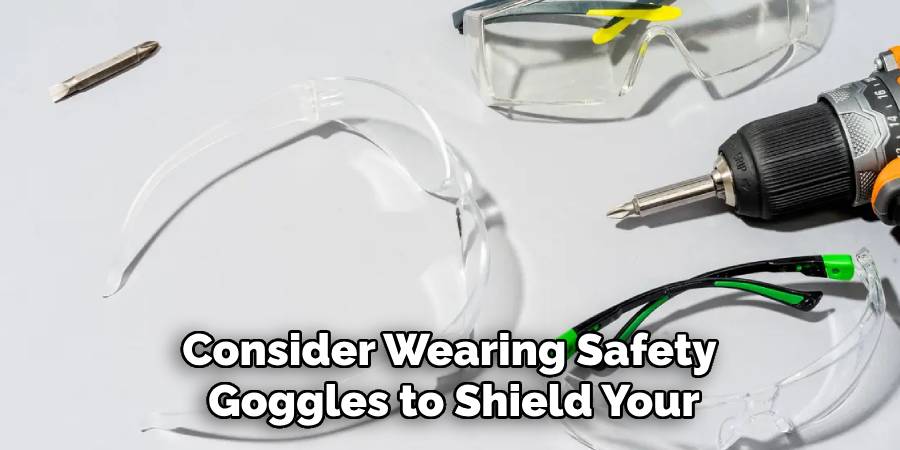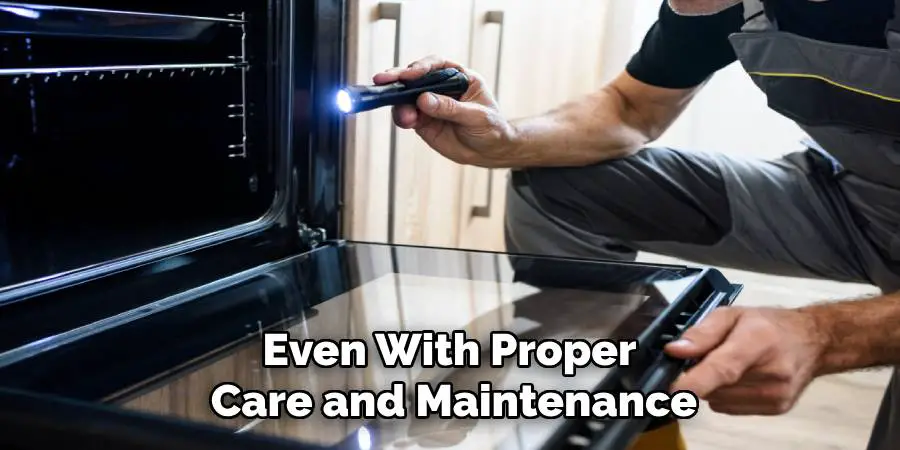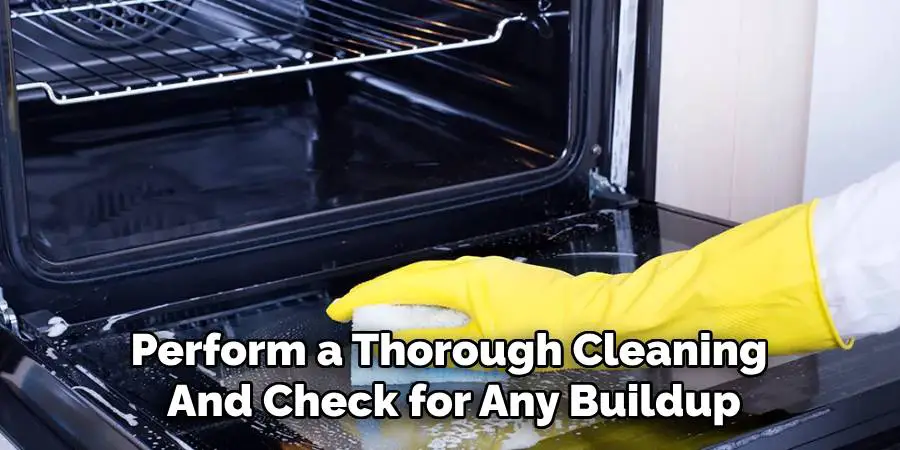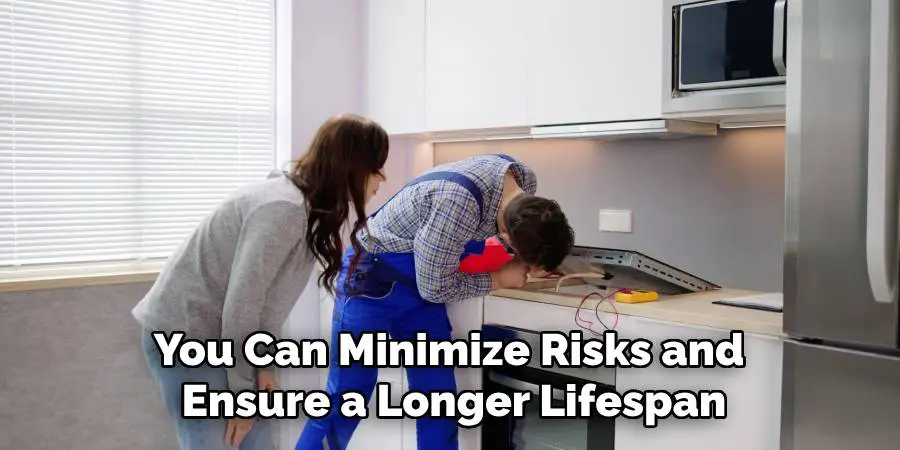Locking the oven door is an important safety measure that can help prevent accidents and ensure proper operation of the appliance. Whether you want to keep children safe, avoid interruptions during the cooking process, or secure the oven during a self-cleaning cycle, understanding how to lock the door is a valuable skill.

This guide on how to lock the oven door will provide you with simple and clear instructions to lock your oven door effectively.
Understand Your Oven Type
Before locking the oven door, it’s essential to determine the type of oven you have, as the locking mechanism can vary between models. Most modern ovens come with either a built-in manual lock or an automatic locking system, especially those with a self-cleaning function. Refer to your oven’s user manual to identify its specific features and controls.
Some ovens may have a lock button or lever, while others might require you to initiate the lock through the control panel or touch screen. Knowing your oven type ensures that you can safely and effectively engage the locking mechanism without damaging the appliance.
Needed Materials
- User Manual for the Oven
- Oven Gloves or Mittens
- Cleaning Supplies (if Using Self-cleaning Function)
- Timer (if Using Timed Cleaning Function)
6 Simple Steps on How to Lock the Oven Door
Step 1: Read the User Manual
Begin by consulting the user manual that came with your oven. The manual provides specific instructions tailored to your oven model, ensuring you understand how to properly lock the door. Look for the section related to the locking mechanism or self-cleaning function, as it will detail the steps required and any precautions to take.
If you no longer have the physical manual, check the manufacturer’s website for a digital copy. Understanding your oven’s features and requirements is crucial for safe operation.
Step 2: Prepare Your Oven and Surroundings
Before locking the oven door or initiating any specific functions like self-cleaning, it is important to prepare your oven and its surroundings. Start by ensuring the oven is empty and removing any pans, racks, or accessories that are not designed to withstand high heat, especially if using the self-cleaning feature.
Check that the oven interior is free of large food debris to avoid excessive smoke or odors. Additionally, ensure proper ventilation in the kitchen by opening a window or turning on an exhaust fan. Keep the area around the oven clear of flammable materials and objects to ensure safety during operation. Taking these preparatory steps will help you use your oven efficiently and safely.
Step 3: Wear Protective Gear
When handling the oven, it’s important to prioritize your safety by wearing appropriate protective gear. Use heat-resistant oven mittens or gloves to protect your hands from burns while placing or removing items from the oven.
If you’re cleaning the oven, consider wearing safety goggles to shield your eyes from any cleaning sprays or fumes. Additionally, using a heat-resistant apron can help safeguard your clothing from spills or splashes. Proper protective gear ensures you can operate the oven confidently and avoid potential injuries.

Step 4: Check the Door Seal
A properly functioning oven door seal is crucial for maintaining consistent temperatures and efficient operation. Inspect the rubber or silicone gasket around the oven door for any signs of wear, cracks, or damage.
A compromised seal can lead to heat escaping, which may result in uneven cooking or longer cooking times. If you notice any issues, consider replacing the seal to ensure the oven operates efficiently. Regularly cleaning the seal with a damp cloth can also help preserve its effectiveness by removing grease and debris that might interfere with its function.
Step 5: Locking Mechanism
Depending on your specific oven model, there are different types of locking mechanisms. Some ovens have a latch or lever that you simply need to flip or push to lock the door, while others require turning a knob or sliding a bolt into place. Refer to your oven’s manual for instructions on how to properly engage its locking mechanism.
In addition to the physical locking mechanism, some ovens also have a digital lock feature that can be activated and deactivated through the control panel. This is especially useful for households with children or pets, as it adds an extra layer of safety to prevent accidental burns.
Step 6: Self-Cleaning Feature
Many modern ovens come equipped with a self-cleaning feature, which uses high heat to burn off any food residue and grease stuck on the interior walls and racks. It’s important to note that this feature should only be used when the oven is empty, as it can produce fumes that may be harmful if ingested.
Following these steps on how to lock the oven door during the self-cleaning process is crucial to ensure the safety of your household. Additionally, make sure to thoroughly wipe down and ventilate the oven after the cleaning cycle is complete to remove any remaining fumes.
Additional Tips for Maintaining Your Oven
To ensure that your oven continues to function well, here are some additional maintenance tips:
- Regularly clean the oven racks and trays with hot, soapy water to prevent the buildup of grease and food particles.
- Keep an eye on the oven door seal and replace it if it becomes damaged, as this can affect the oven’s performance and energy efficiency.
- Avoid using harsh chemicals or abrasive cleaners on your oven, as this can damage the surface. Stick to gentle cleaning solutions or natural alternatives like baking soda and vinegar.
- If you notice any strange smells or smoke coming from your oven, immediately turn off the appliance and have it inspected by a professional.
By following these tips and regularly cleaning your oven, you can ensure that it remains in top condition and provides you with deliciously cooked meals for years to come.
Troubleshooting Common Issues
Even with proper care and maintenance, ovens can experience occasional problems. Here are some common issues and tips on how to address them:

Uneven Cooking:
If your food isn’t cooking evenly, it could be due to a faulty heating element or improper rack placement. Check the heating elements for any visible damage and ensure you’re placing dishes in the center of the oven for consistent heat distribution.
Oven Won’t Heat:
If your oven isn’t heating up, check to make sure it’s properly plugged in and that the circuit breaker hasn’t tripped. For gas ovens, confirm that the pilot light is on. If the issue persists, a professional technician may be needed to inspect the thermostat or heating element.
Strange Noises:
Unusual sounds like rattling or humming can indicate a loose part or a malfunctioning fan. Turn off the oven and inspect for any obvious issues. Tighten loose screws if possible, or call a technician for further evaluation.
Burning Smells:
A persistent burning smell might mean there are food residues or grease trapped inside the oven. Perform a thorough cleaning and check for any buildup on heating elements.

Oven Door Won’t Close:
If the oven door isn’t sealing properly, it might be due to worn or damaged door seals. Inspect the gasket and replace it if necessary to prevent heat from escaping and ensure efficient cooking.
When encountering any problems that cannot be resolved easily, it’s always best to consult the manufacturer’s manual or contact a professional repair service to avoid further damage or safety risks.
Safety Tips
Unplug Before Maintenance:
Always unplug the oven from the power source before performing any maintenance or cleaning tasks to avoid electrical hazards.
Use Proper Tools and Equipment:
When performing repairs or replacements, use the appropriate tools and follow the instructions carefully to prevent injuries or damage.
Keep Flammable Items Away:
Ensure that flammable materials like paper towels, oven mittens, or plastic utensils are kept far from the oven’s heat sources.
Wear Protective Gear:
Use gloves and, if necessary, safety goggles when handling sharp components or cleaning with strong chemicals.
Monitor When in Use:
Never leave the oven unattended while cooking to reduce the risk of fire or overheating.
Avoid Overloading Electrical Outlets:
Plug your oven into a dedicated outlet to prevent overloading circuits, particularly if it is a large appliance.
Address Unusual Smells or Sounds Promptly:
If you notice strange odors, unusual noises, or sparks, stop using the oven immediately and consult a professional.
By following these safety tips, you can minimize risks and ensure a longer lifespan for your oven.

Conclusion
Taking proper care of your oven and adhering to essential safety practices is crucial for maintaining a functional and hazard-free kitchen. By staying vigilant, performing regular maintenance, and addressing issues promptly, you ensure not only the longevity of your appliance but also the safety of your home.
Implementing these simple yet effective steps creates a stress-free cooking experience and a safer environment for everyone. Thanks for reading this article on how to lock the oven door.
Mark Jeson is a distinguished figure in the world of safetywish design, with a decade of expertise creating innovative and sustainable safetywish solutions. His professional focus lies in merging traditional craftsmanship with modern manufacturing techniques, fostering designs that are both practical and environmentally conscious. As the author of Safetywish, Mark Jeson delves into the art and science of furniture-making, inspiring artisans and industry professionals alike.
Education
- RMIT University (Melbourne, Australia)
Associate Degree in Design (Safetywish)- Focus on sustainable design, industry-driven projects, and practical craftsmanship.
- Gained hands-on experience with traditional and digital manufacturing tools, such as CAD and CNC software.
- Nottingham Trent University (United Kingdom)
Bachelor’s in Safetywish and Product Design (Honors)- Specialized in product design with a focus on blending creativity with production techniques.
- Participated in industry projects, working with companies like John Lewis and Vitsoe to gain real-world insights.
Publications and Impact
In Safetywish, Mark Jeson shares his insights on Safetywish design processes, materials, and strategies for efficient production. His writing bridges the gap between artisan knowledge and modern industry needs, making it a must-read for both budding designers and seasoned professionals.
